10 Sequels That Ignored Defining Rules From The Original
Tony Stark needs the arc reactor to keep the shrapnel from killing him... or did he?
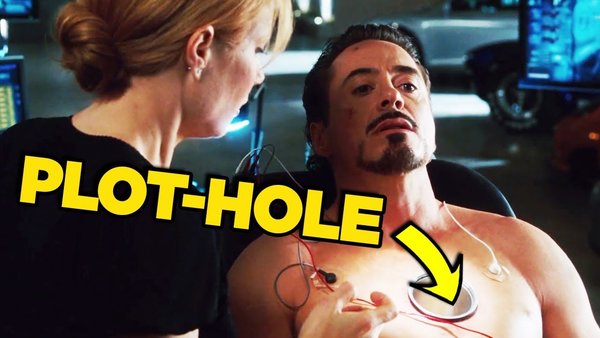
It may not actually be true, but to me it seems like the first discussion filmmakers have when planning a sequel to a popular movie is how they can ruin the rules of the original. How many times have you excitedly been to see a follow up to a sure-fire classic, only for its central rule to be completely discarded?
If you're answer wasn't ten, then you're going to love this list. Here we bring you ten sequels that looked at the conceit that defined their predecessor and went... nah. All of these examples are plain ridiculous, creating plot holes and ruining the principles of the first film.
Although at least in some in rare cases (the seventh, fifth and third entry on this list) the resulting film ends up OK.
Honourable Mention - The Snowman And The Snowdog

What the original said: Snowmen can fly, if they get a good run up.
A short that premiered on TV so I couldn't fully justify placing it on this list proper. But its a good idea to get your demons out of the way early on. Every Christmas since 1987 The Snowman has shown on Channel 4, to the delight of pretty much everyone. In it, we discover snowmen can fly, just with the help of a midnight chime.
And a good run up.
What the sequel said: They can hover. Oh-my-god-how-can-they-do-this-this-is-makes-no-sense-and-turns-a-good-short-into-a-vent-of-all-hate-my-Christmas-is-ruined. Near the end of Snowdog we see the snowman hover. Forget CGI E.T. or borderline pornographic Transformers - this is the true f**k you to my childhood.
10. Iron Man 3

What the original said: Tony Stark needs the arc reactor to keep the shrapnel from killing him.
I never saw the fuss about the original Iron Man. It stuck to the superhero origin outline so rigidly only the fresh character of Tony Stark stopped it being a failure. In a career saving performance from Robert Downey Jr., for once we were more interested in the man behind the super alter ego.
Aside from his playboy ways, what made Stark so interesting was his unique, constant plague; the pull of the arc reactor that powered his suit was the only thing between a piece of shrapnel and his heart.
What the sequel said: It could have been removed the whole time. The way Iron Man 3 ended left a lot open as to how Tony Stark would feature in The Avengers 2. First destroying all of his super suits, he later gets the little piece of metal that has been plaguing his life for four (technically five) movies removed.
So not only was one of the more visually striking elements of the character nullified, but the entire subplot of Iron Man 2 with Tony suffering from poisoning was rendered pointless. It seems director Shane Black was trying for a Dark Knight Rises style finality to his movie, despite Iron Man 3 being far from the end of the character.
9. Ice Age: Dawn Of The Dinosaurs/Continental Drift
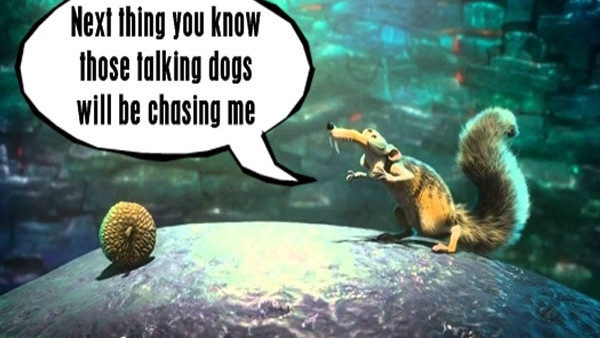
What the original said: We're near the end of the ice age/start of the rise of man.
The first Ice Age did have some rather blinding historical inaccuracies - the three protagonist's species were never alive at the same time and man was yet to walk the Earth at the start of the big freeze - but for the most part it felt real. Each species had the correct motivation and the look of the film made it feel it was set in a real point in our history.
What the sequel said: Except there's dinosaurs and we're still on Pangea.
The third film introduced dinosaurs living underneath the top layer of the Earth. That alone should send off alarm bells, but to be honest Dawn Of The Dinosaurs was too much fun to get too annoyed over; at least there's an attempt at an explanation. And then the fourth film reveals that we've been on supercontinent Pangea the whole time, which is only just beginning to separate.
With no attempt at explanation, it throws off the initially logical timeline in favour of the first dumb ideas that comes to mind. Obviously Ice Age, as a kid oriented movie, doesn't need to be too factually accurate, but, seeing how it started off, it seems incredibly lazy direction for the series to take.
8. Escape From The Planet Of The Apes
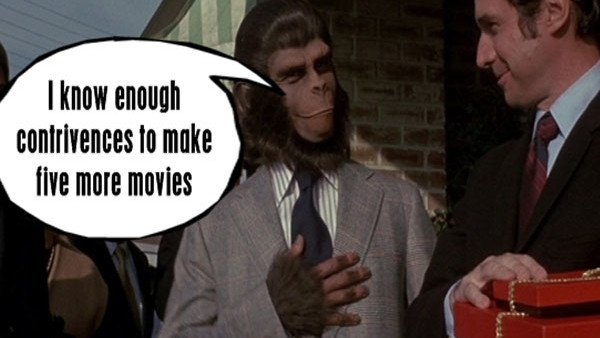
What the original said: There's no way to get home.
The Planet Of The Apes, for a sci-fi made in the sixties, has surprisingly accurate science. No, I'm not talking about future astronauts having female stewards, but that time travel by relativity is in fact possible. That's of course where realism ends; don't go forward expecting to be greeted by monkeys. But do expect there to be no way back.
What the sequel said: Unless we stupidly destroyed the world.
Sadly, the realistic science was lost by the sequel, Beneath The Planet Of The Apes, which introduced nuclear bomb worshiping mutants in an eternal war with the apes. With the ape's accidental help, the bomb is set off and all life in Earth is extinguished. But far from being the end of the franchise, we got a follow on prequel that had a trio of chimpanzee's escape in one of the man-made spaceships.
Escape From The Planet Of The Apes is a fun film that with its light hearted jab at celebrity made everyone forget that escaping in that manner was flat out impossible, both in the existing movie world and reality.
7. Aliens
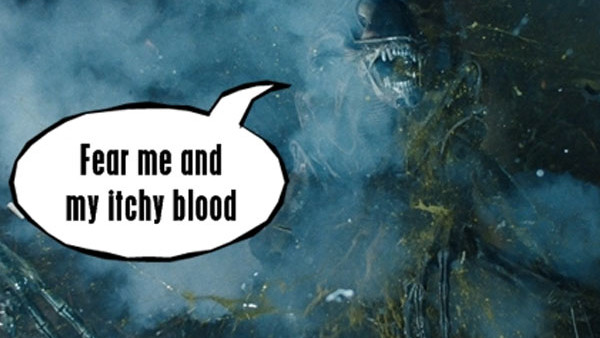
What the original said: Don't get that blood near you, it'll burn you in half.
Before it was diluted by human crossbreeding and Predator enslavement, the Xenomorph was the most ferocious of movie monsters. With its second mouth, nimble movement and destructive reproductive system I can safely say Id be happier taking on Godzilla or Liam Neeson than one of these intergalactic villains.
What makes them so formidable is their indestructibility try and cut them and their acid blood, capable of burning through multiple layers of thick metal, pours out.
What the sequel said: Don't get that blood near you, it''ll sting a little.
Although if you gave me and gun and set me against the Xenomorphs we see in Aliens I'd be a lot less worried. Still ferocious and working with a hive mentality, their blood is much less dangerous.
Obviously stylistically necessary to make the action twist on the universe work, the blood James Cameron presented was a lot less dangerous. Yes it injures Hicks, but not to the same extent you'd have expected it to in the original.
6. Wall Street: Money Never Sleeps
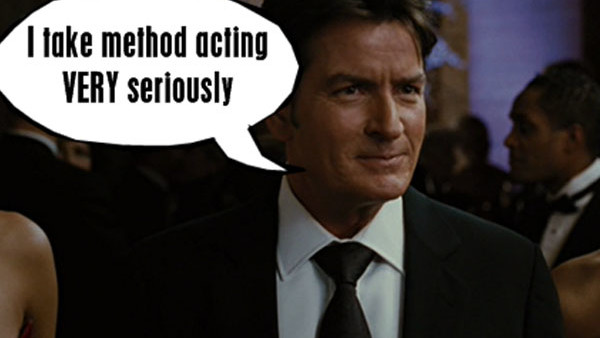
What the original said: Bud Fox has learnt an important lesson about greed.
Wall Street is a film so quintessentially eighties it blurs the line between influencing and pastiching the decade. Telling the story of Bud Fox, played by then up-and-coming Charlie Sheen, we see him initially idolise Michael Douglas' Gordon Gekko, before coming to the attention of the police after high level insider trading. Throwing in Gekko in the process, it's assumed he's learnt the lesson his father was telling him the whole time.
What the sequel said: No he hasn't.
The long gestating sequel ended up being a rather simple revenge story with Gekko simply acting as a throughline between the two movies. Quite early on, we discover it wasn't Bud Fox's actions that sent the former millionaire to jail, already lessening that movie's ending. Later, in an expected cameo we get to see how Bud has turned out.
In an aside that stops the plot dead Douglas bumps into Sheen and they reminisce as old friends; Bud went to jail, but then used Blue Star (a company Gekko's forgotten despite its importance in his past) to make him millions and move into philanthropy (in this case meaning having a blonde strapped to either arm). With that cameo Martin Sheen's father character now has two reasons to be disappointed in his son.
5. Terminator 2: Judgement Day

What the original said: Time is a loop, it can't be changed.
I've already looked at how the timeline of The Terminator is pretty basic. Although Skynet wants to change the past, its robotic mind stops it from realising that isn't possible. Of course, to correct it humans needed to go back, but I don't think John Conner was expecting any Marty McFly style fading.
What the sequel said: Change it as much as you want/You can change it, but not much.
In the second, more drastic, appearance on this list from James Cameron, the entire notion of time travel was changed for the sequel. Now, for no reason other than it's more interesting, the future could be changed. It's one of the primary reasons behind the confusion highlighted in the article above.
In a ridiculous turn of events, things got more confusing in the third film, where it was revealed there were predetermined points in time that couldn't be altered, but other things could still be changed. Struggling with ideas there were ya? Another major change made as the series progressed was the position of Skynet in the war; in the first the terminator was a last ditch effort, but as the movies progressed, their position seemed to shift to the other side, with the third telling us John Conner was actually dead.
4. Saw V (And Beyond)
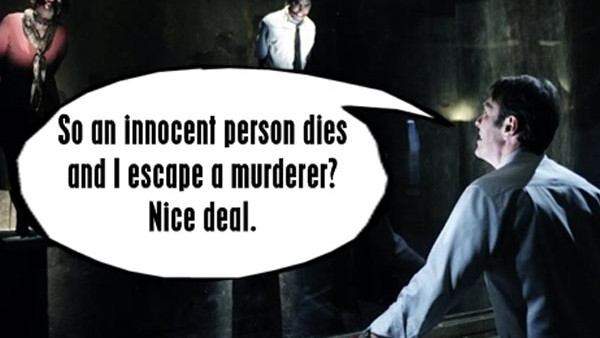
What the original said: Jigsaw is killing for a moral reason.
On the face of it Saw doesn't really seem to be a franchise that would cherish morals in any conceivable way. But, at least when it started, there was an attempt by the filmmakers to give the movies some ethics. Each person in one of serial killer/liberator Jigsaws traps is in some way a bad person who isn't appreciating life, something near death is meant to force you to do.
What the sequel said: F**k it, let's just have some blood.
By about Saw V/VI not only was the definition of 'bad', becoming very subjective, but other, completely innocent people were being brought along for the ride. The image above is one of the traps from the sixth film, which involves the 'protagonist' deciding which of his workmates should die.
Even by the questionable selection methods (the victim here is an insurance clerk), there's no reason either person should be there; they're only present because one has a family and the other's doesn't, prompting a confusing moral dilemma. By this point in the story Jigsaw was long dead, but it's heavily implied this was still his design and thus leaves us not relating to him in the small way the filmmakers wanted.
3. Star Wars Episode V: The Empire Strikes Back
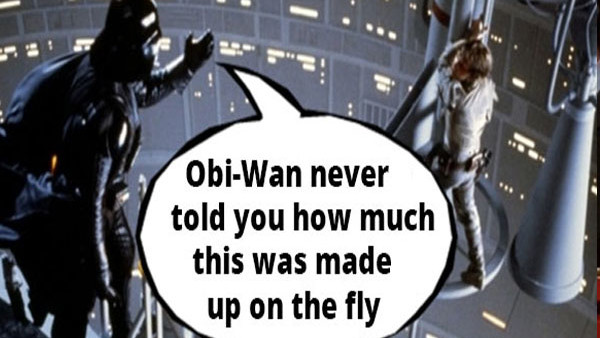
What the original said: Anakin was a good friend to Obi-Wan, killed by Darth Vader.
The major plot hole in Star Wars, at least before the prequels came along, was much of what Obi-Wan said to Luke in his hut during the first act of A New Hope. The life changing news about Luke's father is accompanied with the reveal that Darth Vader killed Anakin. Nothing initially seems off about this old hermit who only surly Uncle Owen doesn't trust, but we eventually learn that isn't the case.
What the sequel said: You seriously don't know?
In a high profile example of how George Lucas didn't plan out where he was taking Star Wars, in Episode V we learn the defining twist that Darth Vader is Luke Skywalker's father. Introduced into the Empire Strikes Back script in its second draft, it ruined much of the development presented in A New Hope.
Of course, the twist is brilliant and shaped Star Wars into what it is today, so really I couldn't care less the sequel went against what was given originally. Lucas later sketchily retconned this with Obi-Wan's certain point of view line in Episode VI, but it's all a bit thrown together he might as well have left it ambiguous.
2. The Lost World: Jurassic Park
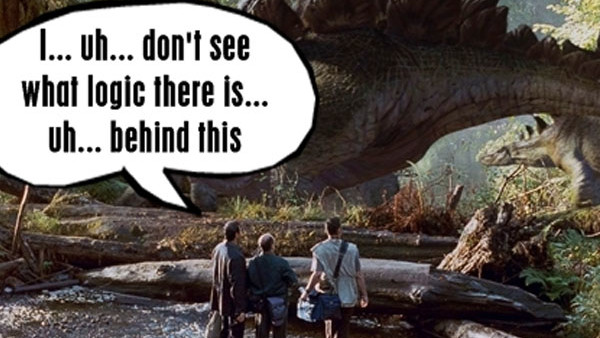
What the original said: John Hammond created dinosaurs for Jurassic Park.
How good is Jurassic Park? It's an infinitely rewatchable, deliriously entertaining film made all the better when you consider Spielberg made it just before the straight-faced, Oscar-winning Schindler's List. The story is so tight, crafting a logical cautionary tale that is as concerned with its unique characters as it is its effects (take note modern Hollywood). Anyway, the film introduces us to Isla Nublar, the home of Jurassic Park where the scientists work to clone dinosaurs for the public.
What the sequel said: There's another island with dinosaurs that were never used it the park; you won't you believe Spielberg directed this.
The first film was tight, but it wouldn't take a massive contrivance to spin a sequel. And yet The Lost World not only turned the motives behind Jurassic Park incredibly corporate (In Gen was completely made up for the sequels), but it added a whole other island to the mix. It's understandable to imagine another island would be used, but not for the purpose presented here.
Isla Sorna, the location for both The Lost World and JP III, is where the dinos were actually cloned and raised. Despite going against what we see in the first film, with raptors hatched in Jurassic Park itself, the real issue is the Sorna has so many dinosaurs we didn't see on Nublar, despite the creatures on existing to go to the theme park. Try and explain it all you want, it's a tedious development.
1. Cars 2

What the original said: See, even at their worse Pixar films are still good.
Cars was always a blemish on Pixar's resume, not connecting with its adult audience in the same way the likes of Monster's Inc. or Finding Nemo did. Still, kids loved it and after multiple runs round the DVD player many doubtful parents began to see its charms. That this flawed, but still funny, emotional and smart film is the worst film Pixar had produced said a lot about their rigorous production process.
What the sequel said: Oh wait, scratch that. Then came Cars 2.
Toy Story 3, in my opinion, didn't quite hit the target. But it was a damn sight better than Cars 2, which went so far that it missed the board entirely. Cars 2 ended Pixar's ten film winning streak; even though the film made a tasty profit, the critics tore it to shreds.
Animation aside there's not much redeemable about this film; the most annoying of the companies supporting cast members became the star and the plot is at once both predictable and, criminally for Pixar, boring. Sure, you can say that this isn't the same type of rule as the previous narrative examples, but the rule of Pixar's greatness was so strong over the past couple of decades, it was the saddest one to see destroyed.